Themed collection New Insights into Biomolecular Systems from Large-Scale Simulations

Introduction to the RSC Advances themed collection on New insights into biomolecular systems from large-scale simulations
Megan O’Mara, Sarah Rauscher and Stacey Wetmore introduce the RSC Advances themed collection on New insights into biomolecular systems from large-scale simulations.

RSC Adv., 2024,14, 6985-6986
https://doi.org/10.1039/D4RA90012J
Collective variable discovery in the age of machine learning: reality, hype and everything in between
Data driven collective variable discovery methods to capture conformational dynamics in biological macromolecules.
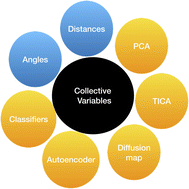
RSC Adv., 2022,12, 25010-25024
https://doi.org/10.1039/D2RA03660F
Pepsin-like aspartic proteases (PAPs) as model systems for combining biomolecular simulation with biophysical experiments
Pepsin-like aspartic proteases (PAPs) are a class of aspartic proteases which shares tremendous structural similarity with human pepsin.
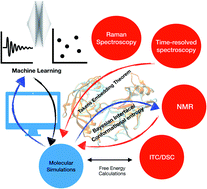
RSC Adv., 2021,11, 11026-11047
https://doi.org/10.1039/D0RA10359D
Million-atom molecular dynamics simulations reveal the interfacial interactions and assembly of plant PSII-LHCII supercomplex
Theoretical simulations reveal the general mechanism of antenna anchoring to the core in PSII.

RSC Adv., 2023,13, 6699-6712
https://doi.org/10.1039/D2RA08240C
Deep learning assisted holography microscopy for in-flow enumeration of tumor cells in blood
Currently, detection of circulating tumor cells (CTCs) in cancer patient blood samples relies on immunostaining, which does not provide access to live CTCs, limiting the breadth of CTC-based applications.

RSC Adv., 2023,13, 4222-4235
https://doi.org/10.1039/D2RA07972K
How a single mutation alters the protein structure: a simulation investigation on protein tyrosine phosphatase SHP2
Dissecting how and why a single E76K mutation alters the probability densities of the conformational ensemble of SHP2 with enhanced sampling metadynamics simulations.
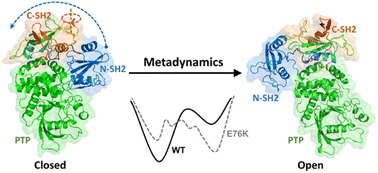
RSC Adv., 2023,13, 4263-4274
https://doi.org/10.1039/D2RA07472A
The concentration-dependent effect of hydrocortisone on the structure of model lung surfactant monolayer by using an in silico approach
Adsorption mechanism of corticosteroid drug hydrocortisone in the lung surfactant monolayer.
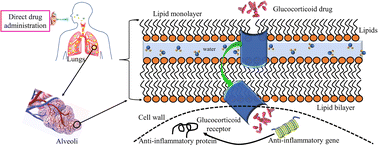
RSC Adv., 2022,12, 33313-33328
https://doi.org/10.1039/D2RA05268G
Compartmentalizing and sculpting nanovesicles by phase-separated aqueous nanodroplets
Internal aqueous nanodroplets form novel stable and long-lived unstable nanovesicles, exclusive to the nanoscale and crucial for membrane nanostructures.

RSC Adv., 2022,12, 32035-32045
https://doi.org/10.1039/D2RA05855C
A wrinkled nanosurface causes accelerated protein unfolding revealing its critical role in nanotoxicity
Wrinkled nanosurface can cause more severe protein distorsions than planar nanosurface because of stronger interactions.

RSC Adv., 2022,12, 30976-30984
https://doi.org/10.1039/D2RA05489B
Partial peptide dissociation and binding groove plasticity in two major histocompatibility complex class I alleles – differences between alleles versus force field and sampling effects
In solution, high-affinity peptides are likely to dissociate partially from two alleles of major histocompatibility complex I. Despite very similar free-energy profiles, two molecular dynamics force fields predict different underlying mechanisms.
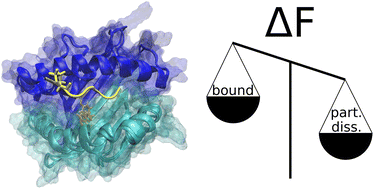
RSC Adv., 2022,12, 29908-29914
https://doi.org/10.1039/D2RA05324A
Computational insights into the formation and nature of the sulfilimine bond in collagen-IV
The proposed mechanisms for formation of the sulfilimine bond in collagen IV, and effects of protonation on the nature and properties of the bond have been computationally examined.

RSC Adv., 2022,12, 21092-21102
https://doi.org/10.1039/D2RA02105F
Does the inclusion of electronic polarisability lead to a better modelling of peptide aggregation?
Simulating the process of amyloid aggregation is a hard task. We test whether the inclusion of electronic polarisability as done in CHARMM-Drude improves the modelling of Aβ16–22 aggregation and find it does not. Reasons for the failure are given.

RSC Adv., 2022,12, 20829-20837
https://doi.org/10.1039/D2RA01478E
Polar/apolar interfaces modulate the conformational behavior of cyclic peptides with impact on their passive membrane permeability
This study uses molecular dynamics and Markov state models to analyse how interfaces interact with cyclic decapeptides and modulate their dynamic and equilibrium properties.

RSC Adv., 2022,12, 5782-5796
https://doi.org/10.1039/D1RA09025A
Simulation of defects, flexibility and rupture in biopolymer networks
We use a coarse grained polymer model and a simple graph representation to introduce defects into a biopolymer network, then cause them to rupture.

RSC Adv., 2022,12, 2171-2180
https://doi.org/10.1039/D1RA07262E
The functional regulatory details of ERK2 in complex with RSK1: an in silico insight
DFG, αC-helix orientation regarding the active site position and distance between K54 and Glu71 in the active and inactive states of ERK2.

RSC Adv., 2021,11, 11048-11056
https://doi.org/10.1039/D1RA01020D
Natural and magnetic circular dichroism spectra of nucleosides: effect of the dynamics and environment
Electronic absorption, natural and magnetic circular dichroism spectra of several nucleosides are simulated to understand their dependence on molecular dynamics and environment, their sensitivity to nucleoside pairing and stacking in nucleic acids.

RSC Adv., 2021,11, 8411-8419
https://doi.org/10.1039/D1RA00076D
Simplified computational model for generating biological networks
We discuss a Monte Carlo method to simulate biological networks and compare to the underlying networks in experimental images.
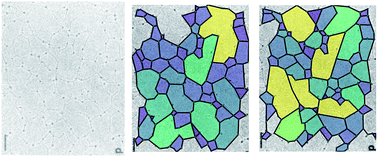
RSC Adv., 2020,10, 38275-38280
https://doi.org/10.1039/D0RA06205G
Deciphering the selectivity of inhibitor MKC9989 towards residue K907 in IRE1α; a multiscale in silico approach
The high selectivity of inhibitor MKC9989 towards Lys907 of IRE1α is explained by the unique pKa properties of the lysine.
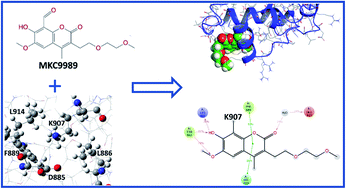
RSC Adv., 2020,10, 19720-19729
https://doi.org/10.1039/D0RA01895C
Machine learning model for fast prediction of the natural frequencies of protein molecules
Natural vibrations and resonances are intrinsic features of protein structures and can be learnt from existing structures.
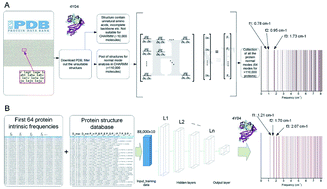
RSC Adv., 2020,10, 16607-16615
https://doi.org/10.1039/C9RA04186A
About this collection
Falling at the interface between biology, chemistry, physics, and computer science, computational biochemistry uses computer simulations to uncover the molecular level details of the structure, interactions, and function of diverse sets of biomolecules. The past decade has become a particularly exciting turning point in the field as modern computational resources are now sufficient to allow biological processes to be simulated at relevant times scales. As a result, new computational approaches have been developed that bridge the gap between simulations and experiments, allowing researchers to answer key questions about biomolecular dynamics and cellular function more broadly.
This themed collection in RSC Advances highlights recent applications of computer simulations to understand the structural and functional dynamics of biomolecular systems, with the goal to extract insights from large datasets and permit direct comparisons to experimental data. An emphasis is placed on the application of large-scale models to address unexplored areas in protein folding, intrinsically disordered proteins, protein aggregation, nucleic acid structure and function, membrane proteins, signaling molecules crossing membranes, and ligand interactions, among other topics.
This collection was Guest Edited by RSC Advances Editorial Board member Professor Stacey Wetmore (University of Lethbridge, Canada), RSC Advances Associate Editor Professor Megan O’Mara (Australian National University) and Dr Sarah Rauscher (University of Toronto).
We welcome you to contribute to this collection. Please contact the Editorial Office to highlight your interest in submitting to this collection, referring the themed collection title.